Antonio Briola
HLOB -- Information Persistence and Structure in Limit Order Books
May 30, 2024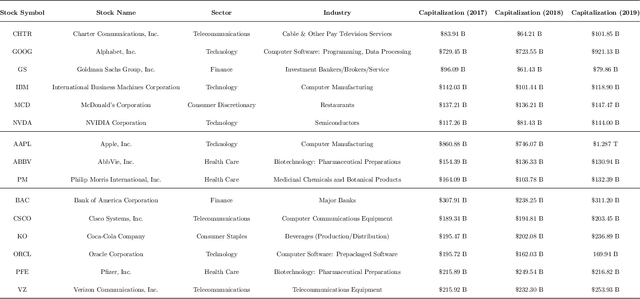
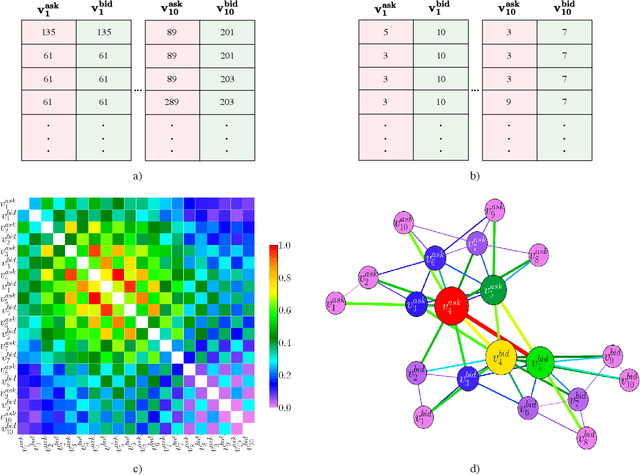
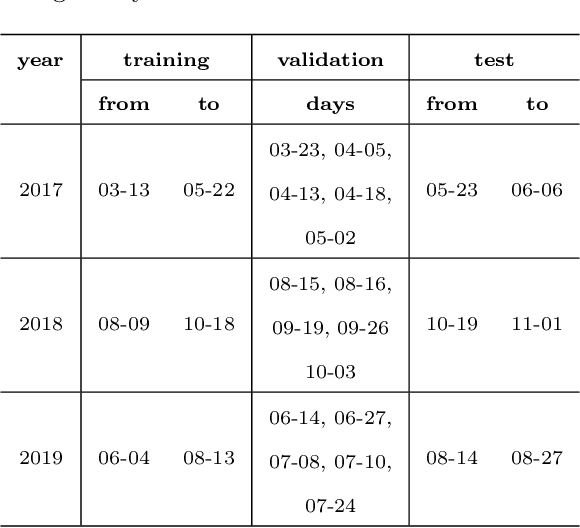
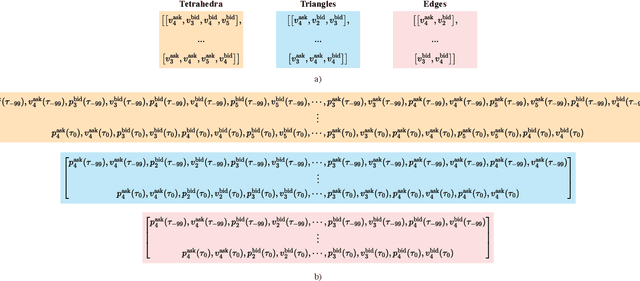
Abstract:We introduce a novel large-scale deep learning model for Limit Order Book mid-price changes forecasting, and we name it `HLOB'. This architecture (i) exploits the information encoded by an Information Filtering Network, namely the Triangulated Maximally Filtered Graph, to unveil deeper and non-trivial dependency structures among volume levels; and (ii) guarantees deterministic design choices to handle the complexity of the underlying system by drawing inspiration from the groundbreaking class of Homological Convolutional Neural Networks. We test our model against 9 state-of-the-art deep learning alternatives on 3 real-world Limit Order Book datasets, each including 15 stocks traded on the NASDAQ exchange, and we systematically characterize the scenarios where HLOB outperforms state-of-the-art architectures. Our approach sheds new light on the spatial distribution of information in Limit Order Books and on its degradation over increasing prediction horizons, narrowing the gap between microstructural modeling and deep learning-based forecasting in high-frequency financial markets.
Deep Limit Order Book Forecasting
Mar 27, 2024



Abstract:We exploit cutting-edge deep learning methodologies to explore the predictability of high-frequency Limit Order Book mid-price changes for a heterogeneous set of stocks traded on the NASDAQ exchange. In so doing, we release `LOBFrame', an open-source code base to efficiently process large-scale Limit Order Book data and quantitatively assess state-of-the-art deep learning models' forecasting capabilities. Our results are twofold. We demonstrate that the stocks' microstructural characteristics influence the efficacy of deep learning methods and that their high forecasting power does not necessarily correspond to actionable trading signals. We argue that traditional machine learning metrics fail to adequately assess the quality of forecasts in the Limit Order Book context. As an alternative, we propose an innovative operational framework that evaluates predictions' practicality by focusing on the probability of accurately forecasting complete transactions. This work offers academics and practitioners an avenue to make informed and robust decisions on the application of deep learning techniques, their scope and limitations, effectively exploiting emergent statistical properties of the Limit Order Book.
Homological Convolutional Neural Networks
Aug 26, 2023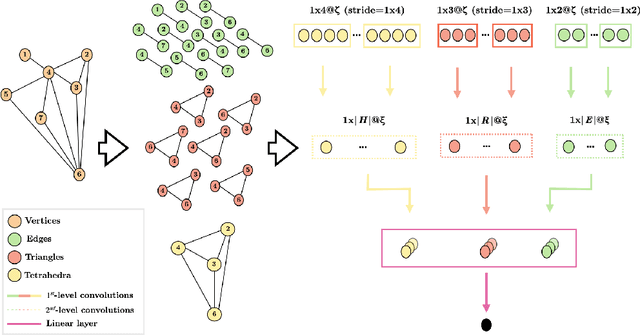

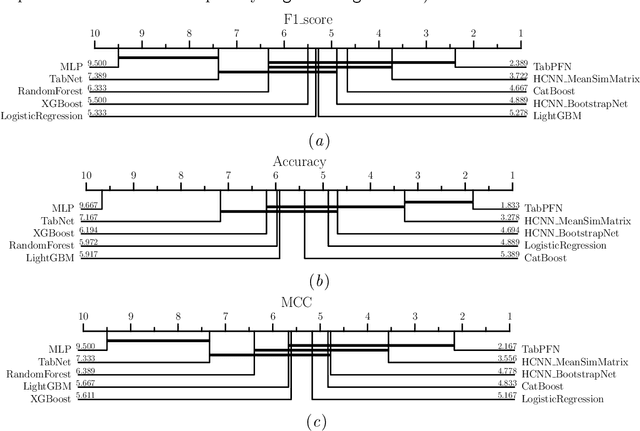

Abstract:Deep learning methods have demonstrated outstanding performances on classification and regression tasks on homogeneous data types (e.g., image, audio, and text data). However, tabular data still poses a challenge with classic machine learning approaches being often computationally cheaper and equally effective than increasingly complex deep learning architectures. The challenge arises from the fact that, in tabular data, the correlation among features is weaker than the one from spatial or semantic relationships in images or natural languages, and the dependency structures need to be modeled without any prior information. In this work, we propose a novel deep learning architecture that exploits the data structural organization through topologically constrained network representations to gain spatial information from sparse tabular data. The resulting model leverages the power of convolutions and is centered on a limited number of concepts from network topology to guarantee (i) a data-centric, deterministic building pipeline; (ii) a high level of interpretability over the inference process; and (iii) an adequate room for scalability. We test our model on 18 benchmark datasets against 5 classic machine learning and 3 deep learning models demonstrating that our approach reaches state-of-the-art performances on these challenging datasets. The code to reproduce all our experiments is provided at https://github.com/FinancialComputingUCL/HomologicalCNN.
Homological Neural Networks: A Sparse Architecture for Multivariate Complexity
Jun 27, 2023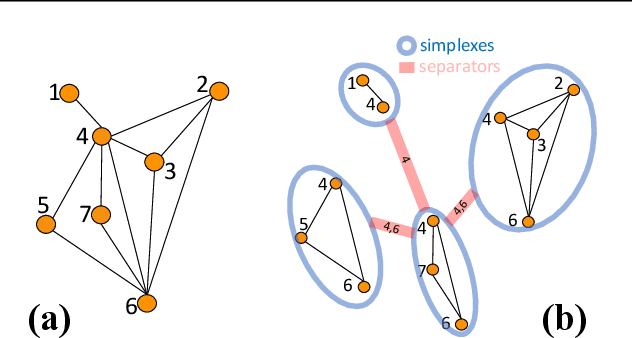

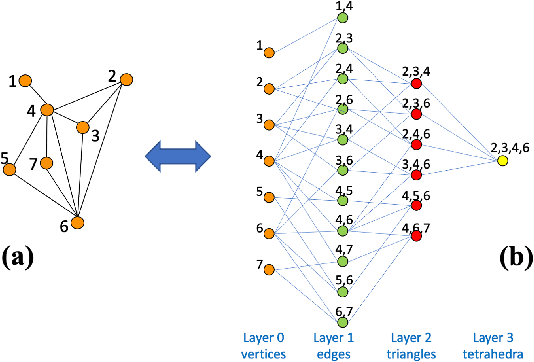

Abstract:The rapid progress of Artificial Intelligence research came with the development of increasingly complex deep learning models, leading to growing challenges in terms of computational complexity, energy efficiency and interpretability. In this study, we apply advanced network-based information filtering techniques to design a novel deep neural network unit characterized by a sparse higher-order graphical architecture built over the homological structure of underlying data. We demonstrate its effectiveness in two application domains which are traditionally challenging for deep learning: tabular data and time series regression problems. Results demonstrate the advantages of this novel design which can tie or overcome the results of state-of-the-art machine learning and deep learning models using only a fraction of parameters.
Topological Feature Selection: A Graph-Based Filter Feature Selection Approach
Feb 19, 2023



Abstract:In this paper, we introduce a novel unsupervised, graph-based filter feature selection technique which exploits the power of topologically constrained network representations. We model dependency structures among features using a family of chordal graphs (the Triangulated Maximally Filtered Graph), and we maximise the likelihood of features' relevance by studying their relative position inside the network. Such an approach presents three aspects that are particularly satisfactory compared to its alternatives: (i) it is highly tunable and easily adaptable to the nature of input data; (ii) it is fully explainable, maintaining, at the same time, a remarkable level of simplicity; (iii) it is computationally cheaper compared to its alternatives. We test our algorithm on 16 benchmark datasets from different applicative domains showing that it outperforms or matches the current state-of-the-art under heterogeneous evaluation conditions.
Deep Reinforcement Learning for Active High Frequency Trading
Feb 04, 2021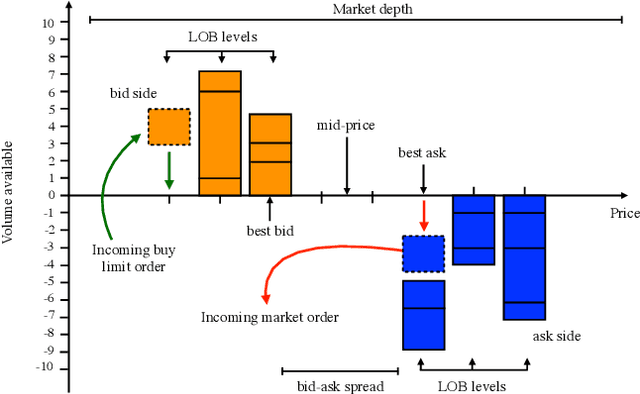



Abstract:We introduce the first end-to-end Deep Reinforcement Learning (DRL) based framework for active high frequency trading. We train DRL agents to trade one unit of Intel Corporation stock by employing the Proximal Policy Optimization algorithm. The training is performed on three contiguous months of high frequency Limit Order Book data, of which the last month constitutes the validation data. In order to maximise the signal to noise ratio in the training data, we compose the latter by only selecting training samples with largest price changes. The test is then carried out on the following month of data. Hyperparameters are tuned using the Sequential Model Based Optimization technique. We consider three different state characterizations, which differ in their LOB-based meta-features. Analysing the agents' performances on test data, we argue that the agents are able to create a dynamic representation of the underlying environment. They identify occasional regularities present in the data and exploit them to create long-term profitable trading strategies. Indeed, agents learn trading strategies able to produce stable positive returns in spite of the highly stochastic and non-stationary environment.
Deep Learning modeling of Limit Order Book: a comparative perspective
Jul 12, 2020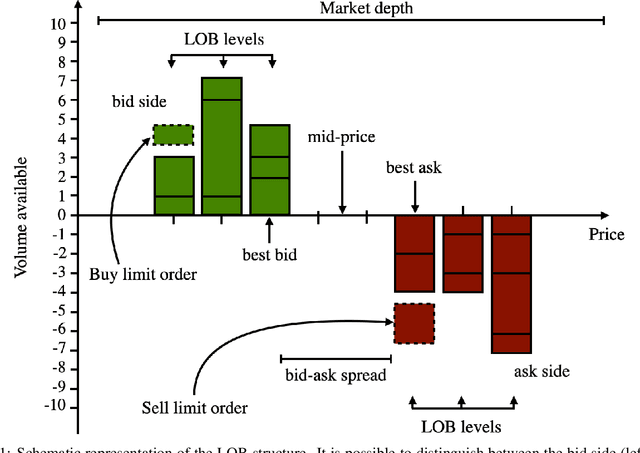
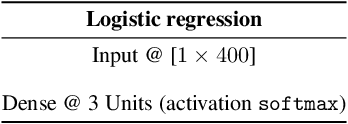

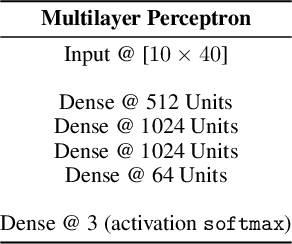
Abstract:The present work addresses theoretical and practical questions in the domain of Deep Learning for High Frequency Trading, with a thorough review and analysis of the literature and state-of-the-art models. Random models, Logistic Regressions, LSTMs, LSTMs equipped with an Attention mask, CNN-LSTMs and MLPs are compared on the same tasks, feature space, and dataset and clustered according to pairwise similarity and performance metrics. The underlying dimensions of the modeling techniques are hence investigated to understand whether these are intrinsic to the Limit Order Book's dynamics. It is possible to observe that the Multilayer Perceptron performs comparably to or better than state-of-the-art CNN-LSTM architectures indicating that dynamic spatial and temporal dimensions are a good approximation of the LOB's dynamics, but not necessarily the true underlying dimensions.
 Add to Chrome
Add to Chrome Add to Firefox
Add to Firefox Add to Edge
Add to Edge